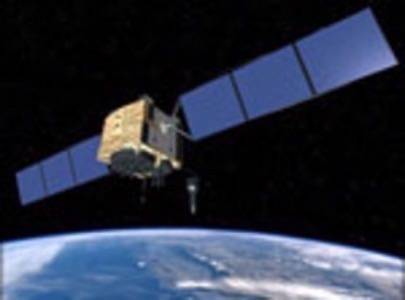Location-based applications are all the rage right now, but anyone who uses them knows that current GPS technology only allows for a certain amount of accuracy. If you pull up Foursquare, Gowalla or any other social check-in app while in a dense business area, chances are the place you’re looking for is not at the top of the list. This is because current GPS chips and satellites are only accurate to roughly 20 feet at best, but this number could shrink significantly with the recent launch of the first of several new GPS satellites.

Late last Thursday, the U.S. Air Force launched the GPS IIF SV-1 satellite from Cape Canaveral (see video below), the first in a series of new satellites designed to overhaul the existing network that has been providing GPS data for nearly two decades. Boeing has been contracted to build 12 GPS Block IIF satellites, part of an $8 billion government project to replace the 24 existing GPS satellites over the next ten years.
According to Boeing, the Block IIF series of satellites include a host of enhanced features and functionality that will improve GPS signal strength, quality and accuracy. Boeing says the new satellites will have “two times greater predicted signal accuracy” than the previous ones, as well as improved signals for aviation and military use. Additionally, this new fleet of satellites should improve the overall accuracy of GPS signals from the rough estimates of 20 feet to a tighter radius of between two and three feet.
For mobile location-based applications, these improvements could be monumental. Not only would location apps as we know them today be greatly improved, but increased power and accuracy could create entirely new breeds of applications. By boosting the signal, the possibility of having GPS function in large indoor facilities, like malls or convention centers, is significantly increased. Mobile apps could be developed to help stranded cave divers, rock climbers or even victims of landslides and earthquakes be located by rescue personnel. In fact, NASA already has plans to continually improve on the GPS satellites for the purpose of creating a better search and rescue system.
Mobile augmented reality, a field that relies heavily on GPS data, would also see large improvements with increased accuracy. With the current limited accuracy of GPS, mobile AR apps can only give users a rough estimate of where locations are relative to their position; these new satellites could make it much easier for an app like Layar or Wikitude to point users directly to the nearest ATM or subway entrance. Combine this with enhanced visual recognition technology and AR could quickly evolve to recognize our surroundings and help us navigate the world.

But what about privacy? With increased accuracy, users’ homes could be identified by their location data, not just what area of town they are in. Location-based applications may need to implement privacy controls that limit the amount of data shared with other users. I wouldn’t mind if an app used as much data as it needed to find me and provide relevant information, but once that is complete, I should have the option of what level of location to share with other users.
The Block IIF satellites are the first step in creating a highly accurate GPS network for consumers. The second step is creating smaller, more capable GPS chips for mobile devices, and the third is updating databases of location data to reflect more accurate results. It’s not good enough anymore to just know the address of an establishment, especially if it is in a mall or shopping center. In the near future, our GPS devices won’t simply drop us off at the block a business is on, they will walk us right through the front door.
Image from Boeing.










